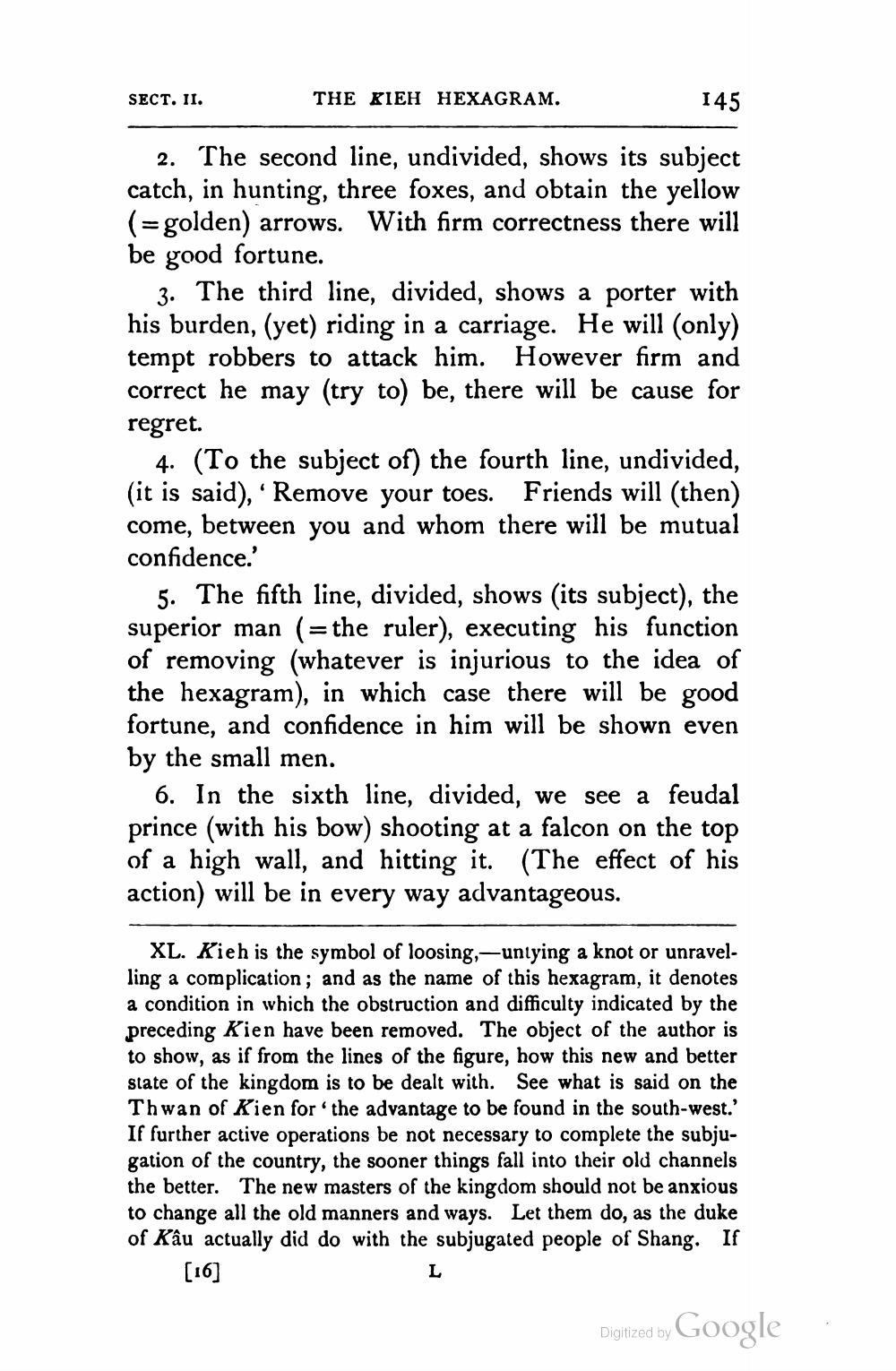________________
SECT. II.
THE KIEH HEXAGRAM.
145
2. The second line, undivided, shows its subject catch, in hunting, three foxes, and obtain the yellow (=golden) arrows. With firm correctness there will be good fortune.
3. The third line, divided, shows a porter with his burden, (yet) riding in a carriage. He will (only) tempt robbers to attack him. However firm and correct he may (try to be, there will be cause for regret.
4. (To the subject of) the fourth line, undivided, (it is said), 'Remove your toes. Friends will (then) come, between you and whom there will be mutual confidence.
5. The fifth line, divided, shows its subject), the superior man (=the ruler), executing his function of removing (whatever is injurious to the idea of the hexagram), in which case there will be good fortune, and confidence in him will be shown even by the small men.
6. In the sixth line, divided, we see a feudal prince (with his bow) shooting at a falcon on the top of a high wall, and hitting it. (The effect of his action) will be in every way advantageous.
XL. Kieh is the symbol of loosing -untying a knot or unravelling a complication; and as the name of this hexagram, it denotes a condition in which the obstruction and difficulty indicated by the preceding Kien have been removed. The object of the author is to show, as if from the lines of the figure, how this new and better state of the kingdom is to be dealt with. See what is said on the Thwan of Kien for the advantage to be found in the south-west.' If further active operations be not necessary to complete the subjugation of the country, the sooner things fall into their old channels the better. The new masters of the kingdom should not be anxious to change all the old manners and ways. Let them do, as the duke of Kâu actually did do with the subjugated people of Shang. If
[16]
Digitized by Google
.




